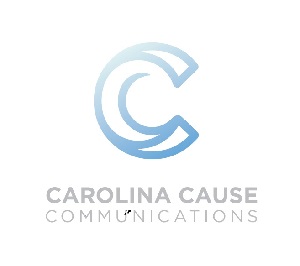
 Special to the Philanthropy Journal
Special to the Philanthropy Journal
By Emily Magnus and Marshéle Carter
Rumor has it that releases are relics. However, statistics tell us that well-written, newsy, press releases still make journalists happy and, more importantly, score positive coverage for diligent cause communicators.
Reporters, producers and bloggers truly do love newsworthy email from us, according to a survey by PWR New Media of more than 200 journalists about their news release preferences and social media usage. Second only to search engines, their favorite source for story ideas is their own inbox! The study confirms that most journalists find news releases useful and silences the rumor that releases are a thing of the past.
 The media have the power to bring attention to your work and a well-written news release is able to establish your organization as a trustworthy resource. Learning how to improve the releases your organization distributes is a wise investment of your time and resources.
The media have the power to bring attention to your work and a well-written news release is able to establish your organization as a trustworthy resource. Learning how to improve the releases your organization distributes is a wise investment of your time and resources.
News Releases are Queen of the Media Kit
A well-written and properly formatted news release is the sun in your PR toolkit galaxy, the queen around which all the other subjects orbit. When executed correctly, a news release can inform and equip all other tactics.
A news release is a communication tool that conveys your message to specific news media outlets. The goal of a news release is to draw attention to your message and to entice reporters to write a story. If news releases are written and formatted correctly, the media are more inclined to incorporate your information into a published news story, which delivers your message to your target audiences.
A Map for Success
This suggested format for a news release is the good map toward success. Simplicity is key when explaining your organization’s perspective. While flowery or scholarly language may seem appealing, keeping your content clear and simple is best. Leave out personal opinions, jargon and clichés. Stick to a third-person point of view. Try to include two, relevant quotes from two, different individuals. Choose quotes that amplify your lead and underscore your call-to-action.
News releases are typically one to three pages in length and include a header that is single-spaced. Certain items must be included, such as labels that read NEWS RELEASE, FOR IMMEDIATE RELEASE, and CONTACT. Under the headline, there is a dateline, which describes the city and state from which the news originates. The first paragraph, called a lead, distinguishes the who, what, when, where, why and how of a story. The body includes quotes and supporting information. When the story includes more than one page, there is a page slug on subsequent pages that indicates continuation of the story. The end of a news release must include a description that your news story is coming to a close, such as -###- or –end-.
Traditional news release must include a boilerplate, which is a short, single-spaced statement at the bottom of the release. The purpose of a boilerplate is to state the organization’s purpose or mission. This is an often-overlooked opportunity for organizations, which gives the media greater detail about the who, what and why of an organization.
 While the format of a news release is important, the style in which the story is told can vary. There are announcement releases, which announce news that is taking place within an organization. Reaction releases counter or respond to other headlines or developments outside of the organization. There are feature releases, which provide a deeper dive or a fresh angle to a larger news story.
While the format of a news release is important, the style in which the story is told can vary. There are announcement releases, which announce news that is taking place within an organization. Reaction releases counter or respond to other headlines or developments outside of the organization. There are feature releases, which provide a deeper dive or a fresh angle to a larger news story.
The primary element of a news release is newsworthiness. Make sure your story has a strong news hook. Too often, the biggest mistake made in writing a news release is simply not including news! So, by all means, avoid sending a “no-news release.”
E-Releases Reign
An alternative approach is an e-release. Releases sent by email have all but replaced traditional releases. An e-release provides transferable content through hyperlinks, making a journalists’ job easier. Journalists, like most individuals, are short on time, visually wired and appreciate a well-organized piece. Journalists look for story ideas by tapping their own inboxes and browsing social media sites. In an e-release, make sure to provide relevant background information and high-resolution, downloadable images.
Properly executed news releases have the ability over time to create a long-lasting, good impression on the media and to position you as a trustworthy and expert source for your cause. When strategically used as a part of a larger marketing effort, news releases may be the most important tool in your toolbox.
Marshéle Carter is the founder and executive director of Carolina Cause Communications, a nonprofit, public relations agency that provides strategic communication counsel, campaigns and tools for nonprofit organizations that support North Carolina’s vulnerable populations.
Emily Magnus is a senior at UNC-Chapel Hill majoring in Public Relations and Religious Studies. She serves as a Public Relations Intern Intern at Carolina Cause Communications.





